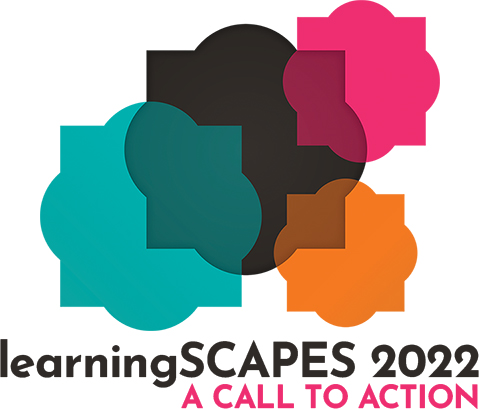 | 1 LU |
 | 1 LU |
"Belonging is the feeling of security and support when there is a sense of acceptance, inclusion, and identity.” (https://diversity.cornell.edu/belonging/sense-belonging). The sense of belonging is essential as a foundational need for success in education, and in life. In the creation of learning environments, it is important to understand and consider developmental theories of place attachment. Patterns of positive experiences in the learning environment and an attachment to place anchor students, giving them a place to learn, a place to feel safe, and a place to belong. This presentation examines the intersection of theories of belonging and place attachment and the role of the learning environment. At that intersection is the concept of identity. Identity represents a set of coherent and unique characteristics that reflect who one is and who one isn’t. Students that find themselves and their community represented at their school are able to activate their self-esteem and move to higher functioning in learning. Panelists will share a series of stories (case studies) that demonstrate how identity, culture, and history as planning and design drivers support place attachment among a school community through:
Identity is manifest in so many aspects of placemaking. Whether through the design and outreach process; the architecture itself; the signage, colors and graphics; or murals and art, the learning environment speaks loudly. Through embracing the importance of students’ rights to identity, we can design and develop dynamic and effective learning environments.
Learning Objectives:

Julia has been working for school districts for the past 19 years to make better places for students to learn. She manages the planning of major projects transforming existing school sites and leads the effort to develop, update and align LAUSD’s design standards and educational specifications with its instructional vision. In her professional and personal efforts, Julia advocates for inspiring learning environments that provide all children the opportunity to learn, to grow and to dream.

Michael has more than 27 years of experience in public facilities' architectural design, primarily on California education campuses. As Design Director at NAC, Michael leads design with a strong emphasis on community engagement, believing that real and pragmatic concerns inform his best work. An energetic designer, Michael has led projects to over 30 design awards in his career. He is a frequent lecturer and writer focused understanding the role of design in addressing social justice and equity. In addition to his roles in practice, Michael has been held teaching positions at Woodbury University, Art Center College of Design, and the Southern California Institute of Architecture.

Leona is an ALEP, Licensed Architect and LEED AP with a background of over twenty years in education architecture. She has also approached the design of learning environments from an owner’s perspective as Director of Design for the Public Building Commission of Chicago, in educational specifications with LAUSD, and as an educator, with adjunct teaching positions at the Harrington Institute and Columbia College in Chicago, and the State University of NY College at Buffalo. Leona is currently a Senior Project Architect in Sacramento with RGA + A Studio of HMC Architects, invested in ensuring the learning environments for students in the Folsom Cordova Unified School District are places they love.
The built and natural environments have profound impacts on our behaviors both for better and worse. How do we cultivate a sense of place for better? How might the built and natural environments be made to enhance teaching and learning? How might school buildings and grounds foster a sense of community by reflecting those they serve?
Primary Core Competency
Educational Visioning: Exhibits an understanding of best and next practices related to educational leadership, programming, teaching, learning, planning and facility design. Establishes credibility with educators, community members and design professionals while conceiving and leading a community-based visioning process. Demonstrates the ability to articulate the impact of learning environments on teaching and learning and uses that ability to facilitate a dialogue that uncovers the unique needs and long-range goals of an educational institution and its stakeholders – translating that into an actionable written/graphic program of requirements for the design practitioner.